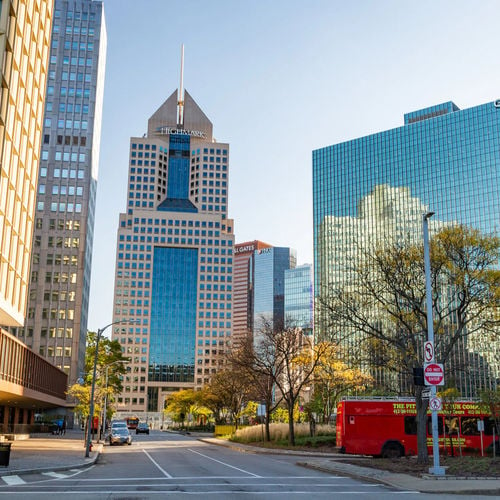New Jersey’s housing situation is painfully familiar: prices are soaring, supply is tight, and many long-time residents are feeling shut out of the market. As Rep. Mikie Sherrill steps into the role of governor, she’s laid out an aggressive affordability agenda — not just rhetoric, but a set of concrete measures aimed at rebalancing the scales.
The Core Problem: Too Few Homes, Too High Prices
One of the biggest challenges facing New Jersey is a severe mismatch between demand and supply. According to her critics and analysts alike, the state is short by more than 200,000 affordable housing units, especially for low-income households.
Meanwhile, the cost of building new homes is out of reach for many; most recent construction skews toward high-end properties, and the “new-build premium” (i.e., the amount by which new homes cost more compared to existing ones) is extremely high. In fact, Realtor.com reports that the premium in New Jersey is around 74%, suggesting that many new units are simply unaffordable to middle-income buyers.
Sherrill’s Strategy: Three Big Pillars
Sherrill’s approach to resolving this crisis rests on three interlocking themes: supply, demand, and relief.
- Building Smarter (Supply)
- She wants to speed up and streamline permitting to reduce delays and make it cheaper and faster to build homes.
- She’s pushing tax credits and loans for developers to convert underused commercial buildings — like office parks or retail spaces — into housing. These wouldn’t just be luxury conversions: she specifically calls for “missing middle” development, including starter homes and accessory dwelling units (ADUs).
- On the zoning front, she’s offering help (planning + technical assistance) to municipalities willing to embrace more density, mixed-use development, and workforce housing.
- She wants to speed up and streamline permitting to reduce delays and make it cheaper and faster to build homes.
- Supporting Buyers (Demand)
- Sherrill plans to expand first-time and first-generation homebuyer programs, boosting down payment assistance so prospective homeowners can actually step into the market.
- Importantly, she promises not to raid the Affordable Housing Trust Fund. In her view, that money should be used for its original purpose — building and preserving homes — not diverted to unrelated budget items.
- Sherrill plans to expand first-time and first-generation homebuyer programs, boosting down payment assistance so prospective homeowners can actually step into the market.
- Easing Cost Pressures (Relief)
- On her very first day in office, Sherrill proposes to declare a state of emergency on utility costs and freeze utility rates for a full year.
- She also wants to drive long-term energy cost reductions by investing in clean energy — more solar development, particularly community solar on public lands, plus faster upgrades to the grid.
- On her very first day in office, Sherrill proposes to declare a state of emergency on utility costs and freeze utility rates for a full year.
Bold Moves, But Not Without Hurdles
All of this sounds promising — but there are real challenges in execution.
- Rate Freeze Complexity: While freezing utility rates for a year feels like a helpful, immediate relief, it’s not simple. Some of the cost drivers for electricity — like regional capacity markets — fall outside state control. Offsetting these costs may require large budget commitments or creative financial workarounds.
- Conversion Risks: Turning commercial buildings into housing is a smart idea, but it depends on the market, construction costs, and local appetite. Encouraging “missing middle” units is great in theory; getting municipalities and developers on board is harder.
- Local Resistance: Not every community wants new density. Zoning reform and increased housing supply often stir pushback. (This is a familiar pattern in many states.)
- Sustaining the Trust Fund: Sherrill’s promise to protect the Affordable Housing Trust Fund is a big deal — but it will require political discipline. That fund has been tapped for non-housing purposes in the past, and keeping it focused will take vigilant leadership.
Why This Matters for Realtors, Developers & Investors
For real estate pros, Sherrill’s plan opens up a lot of potential:
- Developers: There could be renewed incentive to build more “missing middle” housing or convert existing commercial real estate into residential units. That could create attractive mixed-use projects and more inventory in underserved segments.
- Realtors: First-time buyer programs may become more attractive and accessible, bringing new clients into the market. This creates opportunity for outreach, education, and transaction volume.
- Long-Term Investors: If conversion projects scale up and yield stable, affordable housing, investors focused on socially responsible development or long-hold income properties may see compelling opportunities.
- Policymakers and Planners: The success of her agenda could hinge heavily on municipal buy-in. Towns that proactively adjust zoning, plan for more mixed-use housing, and engage with developers may land favorable funding or technical aid.
Bottom Line
Mikie Sherrill’s housing policy isn’t just campaign talk — it’s a cohesive, multi-pronged strategy built around creating supply, helping buyers, and easing cost burdens. She’s betting that the biggest lever for long-term affordability in New Jersey isn’t just regulation, but smart development and energy reform.
If she can pull it off, we could see more accessible housing across the state, especially in the “missing middle” and among first-time buyers. That would be a big shift — and a serious opportunity for real estate professionals who want to meet where the demand is growing.


